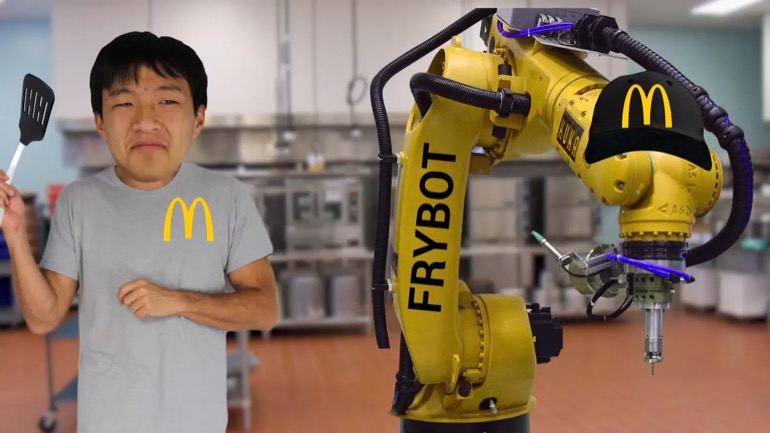You're producing a yarn bracelet using human labor in Indonesia. Production cost? Not much.
You're producing rocket ship engines, or a major feature film? Big production cost.
Things cost what they cost. The presumption runs that smart managers optimize everything, more or less. And then those costs are tracked and packed and accounted for.
A movie that cost $80 million to make has an expected 80% of its costs recouped through its theatrical release? Then by one accounting method, 80% of the costs then get amortized when the release exits theaters. All kinds of chicanery can be had with the books and bookkeeping...but that's why we have GAAP and accountants and all kinds of other inspectors: to be sure profits are really profits and not just the opinings of prophets. Ever see Gandhi? Great film.
Related or Semi-related Video

Econ: What are Production Functions?2 Views
And finance Allah Shmoop what Our production functions well Grandma's
air The source of all A lot of useful wisdom
They say stuff like happiness isn't found It's created and
good manners don't cost nothing And there hasn't been any
good music since the the Elvis died Okay well maybe
not Everything they say is golden But here's another good
one You get out of something what you put into
it Yeah well that one actually works for economics to
it's the basic sentiment behind the production functions The production
function is a process that economists used to show how
much stuff you can make for every potential combination of
input It's essentially a mathematical equation based on data gathered
through the production process And it allows companies to graph
what production would look like given different inputs You know
they consider different questions Like what if we use more
workers Or what if we bought Mohr equipment You know
some big fancy factory with robots What if we replaced
the dehydrated milk in our baby formula with pot ash
All right well these are the kinds questions of production
function answers and well then businesses can allocate their resource
is in the most efficient way possible Well they find
the point on the graph where they get the most
out of what they're putting in and that's what they
shoot for McDonald's is slowly replacing human workers with robots
Well how do they know if it's a good investment
Well they asked the production function or at least look
at it a fry flipping robot Kaswell ten thousand dollars
at volume It costs another two thousand dollars a year
in maintenance and appreciation per year and that fry flipping
baht can cover one friar And there are five fryers
at the restaurant so it takes five bots to replace
one worker or about fifty grand to replace that one
worker Wealthy company does some trials and finds that a
fry flipping robots can do the job two times faster
than one person In actuality or reality that person cost
twenty dollars an hour after salary of fifteen bucks and
then taxes and all the everything's company has to pay
pension health care all that stuff So over the course
of a year a fulltime fried flipper cost McDonald's forty
thousand dollars well to replace the employees the company needs
five bots costing a total of fifty grand It'll cost
another ten thousand dollars total in the maintenance and appreciation
But the Frye body is twice as fast as the
worker meaning McDonald's Khun turnover twice a cz many fries
So you'd need to workers to match the output of
the fry bots Well the bots cost say sixty thousand
dollars in Year one And yes we're making up a
lot of numbers The workers costal eighty thousand those two
workers But the company is already in the black They've
made twenty thousand dollars in savings by replacing those low
skilled workers with robots Well the production function can have
many variables in practice The production function depends on the
product being produced Different products require different levels of inputs
and the relationships between the inputs are different That cab
all of relationships includes things like land and labor and
capital in raw materials and time However many of these
dropout is being irrelevant or they get combined and kind
of fade away Key idea here is that the simple
version of all of this has two variables to variable
inputs There's labor that's usually represented by a big fancy
capital L And then there's capital that's usually represented by
you Hey there And this combo gives you the quantity
of output like in the equation And this gets a
queue right Belle Plus Que is cute that's in its
simplest form and that's the production function And that's what
it looks like The amount of labour and the amount
of capital gives you the amount of output The production
function can help measure the marginal productivity of one factor
of production It can also help figure out the least
expensive and most efficient way to make a product like
Say you're going to make pies with Grandma You're going
to need to spend a little capital on ingredients and
you know pie tins Well that's the capital That's the
big K You've also got labor That's you And grandmama
That's the big Al there for labor Enough for losers
Sorry Grandma Alright now onto your production function right there
Well you could decide whether getting some more money for
ingredients will help you bake more pies Or if you
call your cousins to help with the baking and Ad
Tio El there Or you could do both Now we
just need to talk to Grandma about her musical taste 00:04:17.677 --> [endTime] Yeah
Up Next
What is a Production Possibilities Curve? The Production Possibilities Frontier Curve (PPF) is a statistical graphic curve that depicts the compari...
